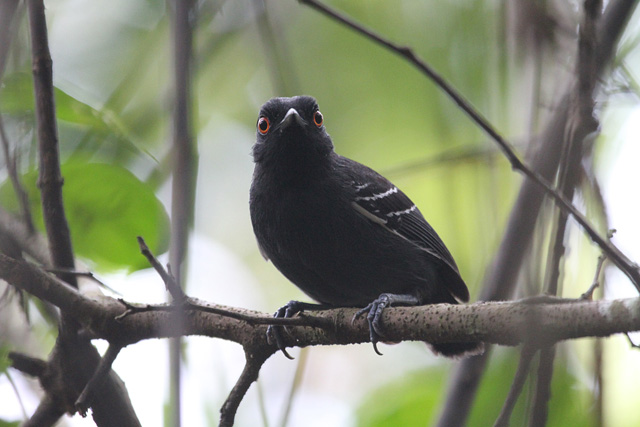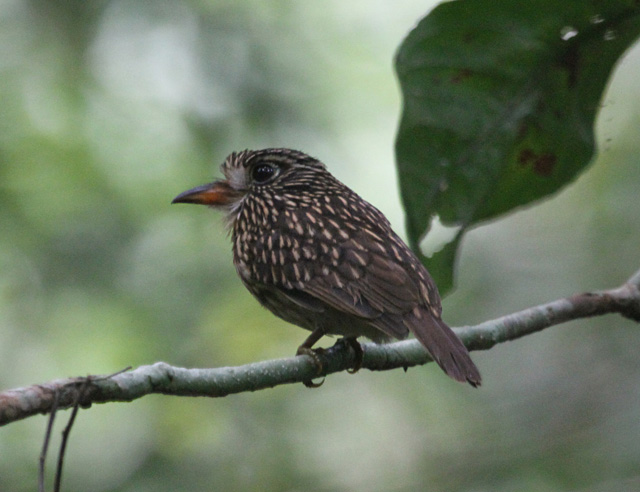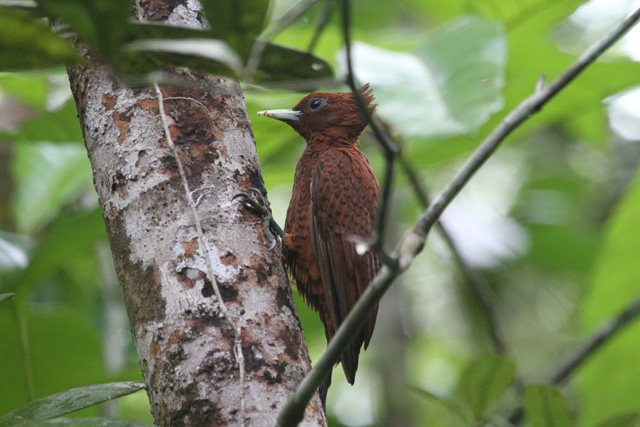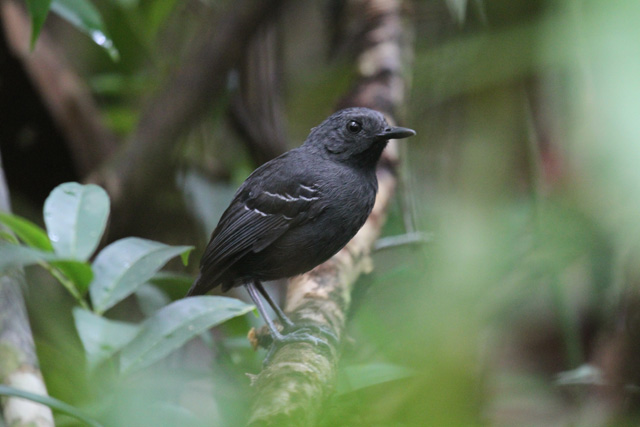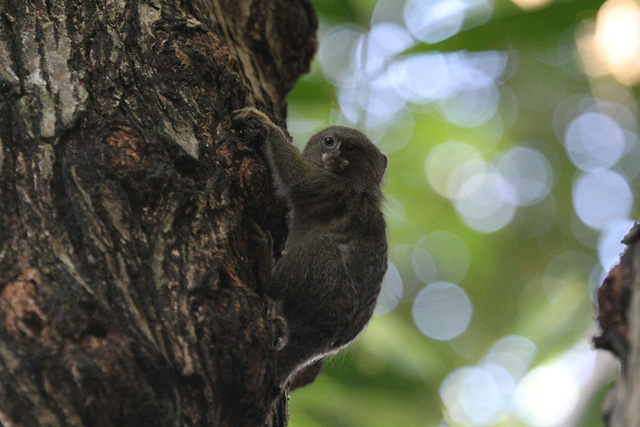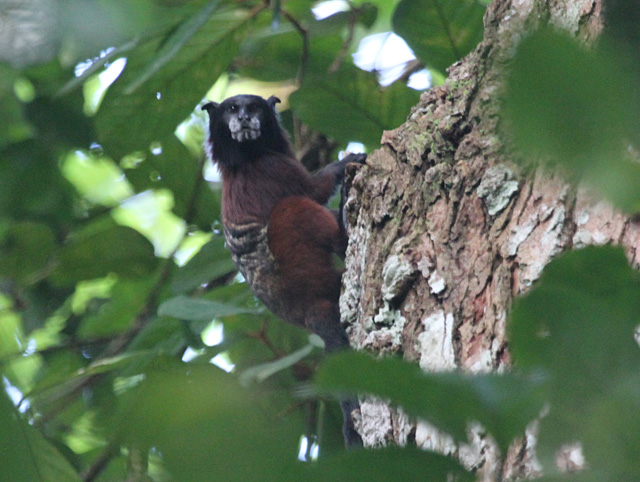Fabrice Schmitt on his just-concluded scouting trip to the Iquitos, Peru area
Many people think of the Amazonian lowlands as a uniform green ocean of forest but they are anything but uniform, and the Iquitos region of Northern Peru is a wonderful area to discover the subtleties between varzea, floodplain, terra firme and white sand forest. It's possible to pass from one habitat to the other in just a few hours and given that birds and other creatures are extremely sensitive to these differences, many species will only be found in one specific kind of forest. For example, the Black-tailed Antbird is restricted to floodplain forest along large rivers, while the White-chested Puffbird is mostly restricted to terra firme.
Black-tailed Antbird, found only in seasonally flooded forest
White-chested Puffbird, mostly restricted to the terra firme
Scale-breasted Woodpecker, another terra firme denizen
The Iquitos area is particularly well known for its extensive white sand forest where no less than four new species to science have been discovered the last 15 years, including Allpahuayo, Ancient and Zimmer’s Antbirds, all of which I saw well during my trip.
Allpahuayo Antbird, a white sand specialist
Two major biogeographical barriers, the Amazon and the Napo rivers, also divide the Iquitos area and many species are only found south or north of these rivers, adding to the diversity of the area and explaining in large part why during my two weeks near Iquitos I recorded around 400 species of birds and no fewer than 10 species of monkey.
Pygmy Marmoset, the smallest true primate in the world
Red-mantled Saddle-back Tamarin, found only north of the Amazon and west of the Napo
I'm hoping to run a WINGS tour in this wonderful area in 2016.

